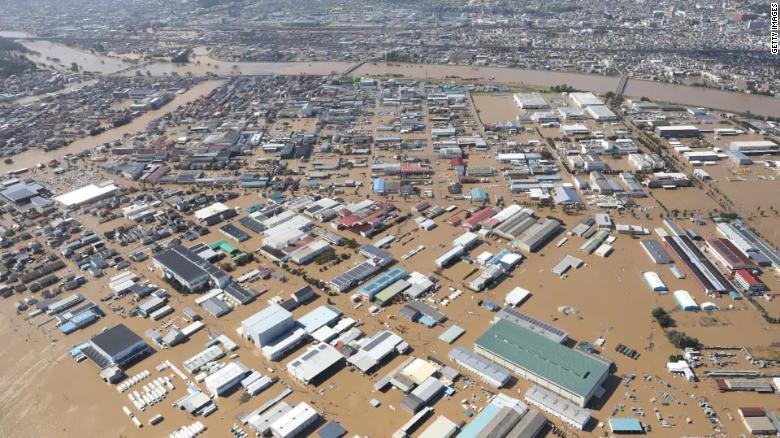TOKYO, Oct. 16 (Xinhua) -- Japan will use around 710 million yen (6.5 million U.S. dollars) from the national budget's 2019 reserve fund to help finance disaster relief efforts following a powerful typhoon battering the country last weekend and wreaking havoc, Japanese Prime Minister Shinzo Abe said Wednesday.
Speaking at an Upper House Budget Committee meeting, the Japanese leader said that the emergency funds will be dispersed to finance emergency transportation of relief supplies, including water, food and makeshift shelters for those still displaced.
The Cabinet Office said that as of Wednesday, around 4,400 people still remained displaced and are being categorized as evacuees. They are currently staying at 188 temporary shelters, the office said.
Abe also said the funds will be used to help bolster personnel on the ground dealing with the aftermath of Typhoon Hagibis, the most powerful typhoon to hit Japan in decades and one which claimed the lives of at least 74 people.
The Japanese premiere said that searches were still continuing for more than a dozen people still missing and said that the numbers of those engaged in emergency missions around the clock, comprising firefighters, self-defense force personnel (SDF), coast guard members and police has totaled around 110,000 individuals.
While damaged levees are being fixed and temporary ones being used to ensure flooding in hard-hit areas remains contained, as pump trucks battle to rain the water, temporary levees are also being installed at the numerous rivers that have bursts their banks around the country.
The infrastructure ministry said Wednesday that embankments had collapsed at 79 locations along 55 rivers, as the full extent of the damage begins to become clearer. The number of collapsed embankments had risen from 74 announced a day earlier.
Local and central government officials, however, are still finding it hard to fully assess the level of damage caused in some worst-hit regions, as muddy flooded areas has made it difficult to gain access to some areas, despite pump trucks being deployed to help rectify the situation.
Abe said the government would continue with a plan to fully survey the affected regions to determine whether they could be designated as "suffering from a serious disaster," which would enable the government to dispatch further funds for those areas in particular.
"We will make the utmost effort so the disaster victims can return to their lives without worries as soon as possible," the prime minister said.
Japan's northeastern region, yet to fully recover from a massive earthquake-triggered tsunami in 2011, was particularly hard hit by Typhoon Hagibis, with 26 deaths registered in Fukushima, making it the region with the highest death toll among all of Japan's 47 prefectures.
